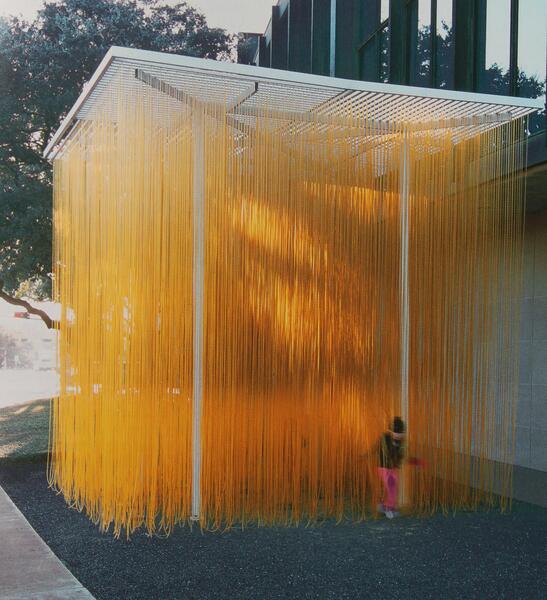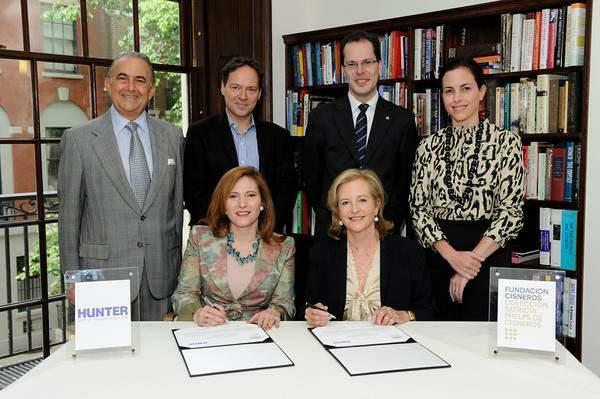Study of Latin American Art at Hunter College Transformed with Major Gift from Fundacion CPPC
Newly Established the Patricia Phelps de Cisneros Professor of Latin American Art
Hunter College has entered into a major partnership with the Fundación Cisneros/Colección Patricia Phelps de Cisneros (CPPC) that will have a transformative impact on the teaching and development of Latin American art at Hunter. The initiative establishes the Patricia Phelps de Cisneros Professorship in Latin American Art at Hunter and provides Hunter students with access to the resources of the CPPC. These range from curatorial scholarship to archival materials, to artworks from the collection that will be made available to the Hunter College Art Galleries for study, exhibition, and publication.

The Cisneros Professor will develop a formal program of teaching Latin American and Caribbean art at Hunter, serving as an ambassador for the field throughout the College. He or she will also organize public programs that will serve both the Hunter and greater New York City communities. An international search for the Cisneros Professor is currently under way.
“Hunter College is extremely fortunate to have access to the unparalleled collection of the Fundación Cisneros/Colección Patricia Phelps de Cisneros. We are grateful to the foundation for enabling this partnership, making possible the creation of a critical new professorship and giving our students and faculty this extraordinary opportunity,” said President Raab. “We are greatly looking forward to the immediate impact the CPPC gift will have and are immensely thankful for the legacy this will create. The CPPC gift is a new page in the history of Hunter.”
Patricia Phelps de Cisneros added, “We are honored to collaborate with Hunter College on this new academic initiative, which is in perfect harmony with our mission to increase international understanding of the full scope of Latin American art and culture. We believe that the Hunter community provides the perfect blend of students and faculty to make this a success.”
Over the past two decades, the understanding of modern Latin American art among North American and European scholars, curators, and the public has shifted dramatically. Once identified primarily with “exotic” and folkloric work, it is today more accurately known for its diversity and fundamental position within the international avant-garde. Yet despite growing interest in the field, with some notable exceptions, few universities in North America teach Latin American art as a regular part of their curricula. With the Hunter-CPPC partnership, New York’s premier public university will join the field of colleges that teach this subject, adding a new center for teaching and research in the field.
In addition to developing and teaching both undergraduate and graduate art history courses, the Cisneros Professor will assist in the development of curricula in a wide range of academic departments, infusing them with the study of art from South and Central America, the Caribbean, and Mexico. He or she will collaborate with Hunter’s Latin American & Caribbean Studies program, and with the Departments of Africana and Puerto Rican/Latino Studies, History, Sociology, and Romance Languages, as well as with the widely respected Centro de Estudios Puertorriqueños.
Another crucial component of the Professor’s role will be to oversee two exhibitions in the Hunter College Art Galleries that will provide Hunter students with first-hand curatorial experiences. Students will be invited to write for the accompanying catalogues, and take part in a wide range of curatorial activities. Drawing on the expertise and resources of the CPPC as needed, the Professor will develop and participate in a range of public programs that engage both students and the public. These may include lectures by visiting artists from Latin America, panel discussions, conferences, and colloquia.
Joachim Pissarro, Bershad Professor of History of Art/Director of the Hunter College Art Galleries, noted, “The CPPC gift is one of the most significant and transformative events that I have known in the art department at Hunter. Not only does it fulfill one of our most essential requirements, by teaching and encouraging a growing interest in Latin American and Caribbean art among our students and our public community, it does so by bringing together separate facets of the art world that are seldom interwoven: the classroom, the museum gallery, and important publications.”








